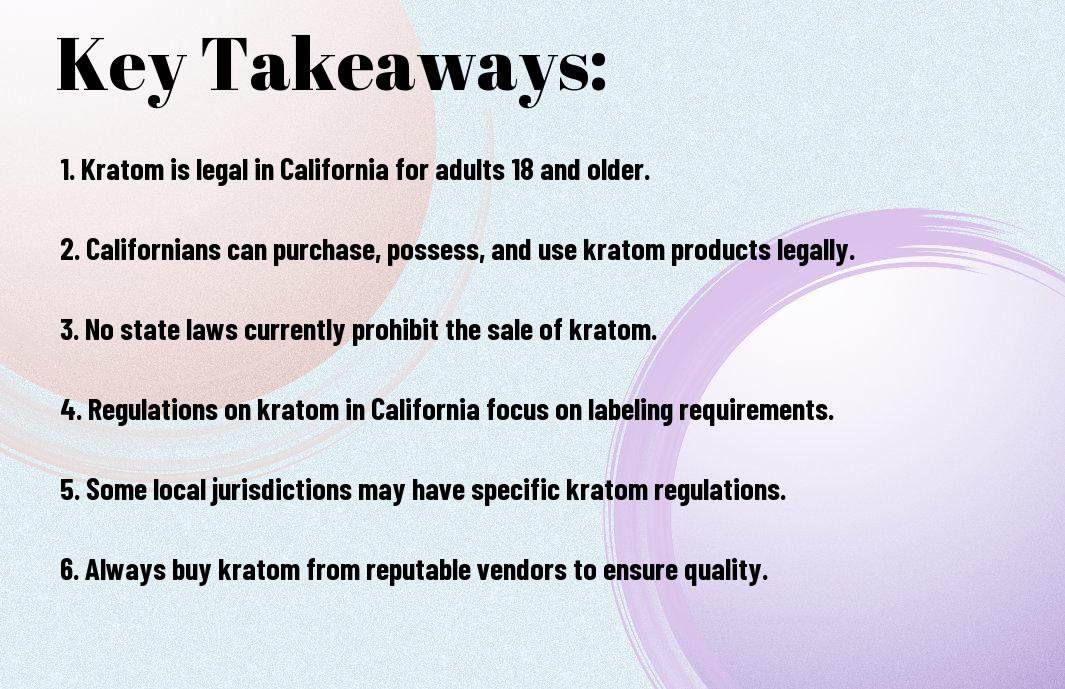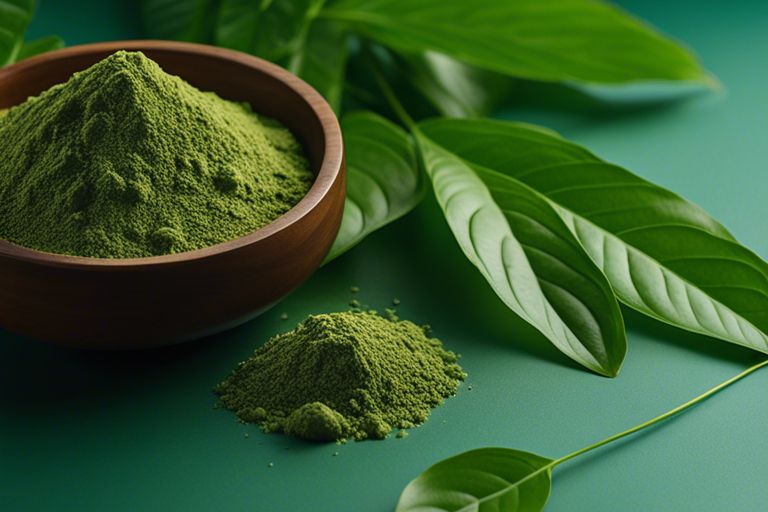Deprecated: mb_convert_encoding(): Handling HTML entities via mbstring is deprecated; use htmlspecialchars, htmlentities, or mb_encode_numericentity/mb_decode_numericentity instead in /home/users/kratomfiles/www/kratomfiles.com/wp-content/plugins/quick-adsense-reloaded/includes/template-functions.php on line 3552
Kratom, also known as Mitragyna speciosa, is a tropical evergreen tree in the coffee family native to Southeast Asia. It has been used for centuries in traditional medicine to alleviate pain, boost energy, and relieve anxiety. The leaves of the kratom tree contain compounds that have psychotropic effects when consumed, and it is often used in the form of powder, capsules, or extracts. In recent years, kratom has gained popularity in the United States as an alternative to prescription opioids for pain management and as a natural remedy for various ailments. However, its use has also been controversial due to concerns about its safety and potential for abuse.
Kratom contains alkaloids that act on the opioid receptors in the brain, producing effects similar to opioids such as morphine and codeine. These alkaloids can also interact with other neurotransmitter systems, leading to stimulant effects at low doses and sedative effects at higher doses. As a result, kratom has been used for a wide range of purposes, including pain relief, mood enhancement, and as a substitute for opioids during withdrawal. However, its psychoactive properties have raised concerns about its potential for addiction and dependence. Despite these concerns, many people in California and across the United States continue to use kratom for its perceived benefits, leading to ongoing debates about its legal status and regulation.
Key Takeaways
- Kratom is a tropical tree native to Southeast Asia, known for its medicinal and recreational properties.
- Kratom has been used for centuries in traditional medicine and cultural practices in Southeast Asia.
- In California, kratom is currently legal for individuals over 18 years old to purchase and consume.
- There have been efforts to regulate or ban kratom in California, but none have been successful so far.
- Public perception and use of kratom in California varies, with some advocating for its benefits and others expressing concerns about its safety.
History of Kratom in California
The history of kratom in California dates back to the early 2000s when it first started gaining popularity in the state. At that time, kratom was relatively unknown outside of Southeast Asia, where it had been used for centuries as a traditional remedy. However, with the rise of the internet and online commerce, kratom became more accessible to people in California and other parts of the United States. As its popularity grew, so did concerns about its safety and potential for abuse, leading to increased scrutiny from lawmakers and regulatory agencies.
In 2016, the California Department of Public Health issued a warning about the risks of using kratom, citing potential adverse effects such as seizures, liver damage, and even death. This warning sparked a debate about the safety of kratom and whether it should be regulated or banned in the state. Despite these concerns, many people in California continued to use kratom for various purposes, leading to a growing demand for access to the plant. This has led to ongoing efforts to regulate or ban kratom in California, with advocates and opponents of the plant clashing over its legal status.
Current Legal Status of Kratom in California
As of 2021, kratom is legal to buy, sell, and possess in California for individuals over the age of 18. There are no specific laws or regulations that prohibit the use of kratom in the state, and it is widely available in stores and online. However, there are some restrictions on how kratom can be marketed and labeled, as well as requirements for product testing and quality control. Additionally, some local jurisdictions in California have imposed their own regulations on kratom sales and distribution, leading to a patchwork of rules across the state.
Despite its legal status, there have been ongoing efforts to regulate or ban kratom in California. In 2019, Assembly Bill 228 proposed to regulate kratom as a food product rather than a controlled substance, which would have allowed for greater oversight and quality control. However, the bill was ultimately shelved due to concerns about potential unintended consequences and lack of consensus among stakeholders. This has left the legal status of kratom in California somewhat ambiguous, with ongoing debates about how best to regulate its use and distribution.
Efforts to Regulate or Ban Kratom in California
| Date | Regulation/Ban Effort | Status |
|---|---|---|
| 2016 | AB 1579 – Kratom Control Act | Failed to pass |
| 2019 | AB 228 – Kratom Regulation Act | Withdrawn by author |
| 2020 | AB 1236 – Kratom Consumer Protection Act | Failed to pass |
Efforts to regulate or ban kratom in California have been driven by concerns about its safety and potential for abuse. Proponents of regulation argue that kratom should be subject to quality control measures to ensure its safety and purity, as well as age restrictions to prevent access by minors. They also argue that regulating kratom as a food product would provide greater oversight and consumer protection, while still allowing access to those who benefit from its use. On the other hand, opponents of regulation argue that kratom is a natural plant with a long history of traditional use, and that imposing restrictions on it would infringe on personal freedom and limit access to a potentially beneficial remedy.
In addition to legislative efforts, there have been calls for regulatory agencies such as the Food and Drug Administration (FDA) to take action on kratom. The FDA has issued warnings about the potential risks of using kratom, citing concerns about contamination with salmonella and heavy metals, as well as its potential for addiction and dependence. However, despite these warnings, the FDA has not taken any formal action to ban or regulate kratom at the federal level. This has left the legal status of kratom in California and other states largely up to individual jurisdictions, leading to a complex and evolving landscape of regulations.
Public Perception and Use of Kratom in California
The public perception of kratom in California is mixed, with some people viewing it as a natural remedy with potential health benefits, while others see it as a dangerous substance with potential risks. Those who use kratom often cite its ability to alleviate pain, boost energy, and improve mood without the side effects of prescription opioids. Many people in California use kratom as an alternative to pharmaceutical drugs for chronic pain management or as a way to reduce anxiety and depression. However, there are also concerns about its potential for addiction and dependence, as well as its safety when used in high doses or combined with other substances.
Despite these concerns, the use of kratom continues to grow in California, with an increasing number of stores and online vendors selling kratom products. This has led to a thriving community of kratom users who share information and experiences online through forums and social media groups. Many users advocate for the benefits of kratom and push back against efforts to regulate or ban it, arguing that it has improved their quality of life and should be accessible to those who need it. However, there are also voices within the medical and public health communities who warn about the potential risks of using kratom without proper oversight and regulation.
Is Kratom Legal in California Similar to Michigan?
Yes, Kratom is legal in both California and Michigan. The kratom legal status Michigan allows for the sale and consumption of kratom products. Similarly, in California, kratom is legal and can be purchased without any legal restrictions.
Potential Future Changes to Kratom Laws in California

The future legal status of kratom in California is uncertain, with ongoing debates about how best to regulate its use and distribution. There are several potential paths forward for kratom laws in the state, including further legislative efforts to regulate it as a food product or impose age restrictions on its sale. There may also be increased pressure on regulatory agencies such as the FDA to take action on kratom at the federal level, which could have implications for its legal status in California and other states.
In addition to legislative and regulatory changes, there is also potential for shifts in public perception and understanding of kratom. As more research is conducted on its safety and efficacy, there may be greater clarity on the risks and benefits of using kratom. This could lead to more informed discussions about how best to regulate its use and ensure consumer safety. Ultimately, the future legal status of kratom in California will depend on a complex interplay of political, social, and scientific factors that will shape its place in the state’s legal landscape.
Conclusion and Summary of Kratom’s Legal Status in California
In conclusion, kratom’s legal status in California is currently complex and evolving, with ongoing debates about how best to regulate its use and distribution. Despite concerns about its safety and potential for abuse, kratom remains legal to buy, sell, and possess in the state for individuals over the age of 18. However, there are ongoing efforts to regulate or ban kratom at both the state and federal levels, driven by concerns about its safety and potential risks.
The future legal status of kratom in California is uncertain, with potential for further legislative efforts to regulate it as a food product or impose age restrictions on its sale. There may also be increased pressure on regulatory agencies such as the FDA to take action on kratom at the federal level, which could have implications for its legal status in California and other states. Ultimately, the future legal status of kratom in California will depend on a complex interplay of political, social, and scientific factors that will shape its place in the state’s legal landscape.
If you’re interested in learning more about kratom in California, you may want to check out this article on Lucky Herbals Kratom. Lucky Herbals offers a variety of kratom products, including resin extract and blends like mixing kratom and kava. You can read more about their offerings and the benefits of using kratom in California here.










